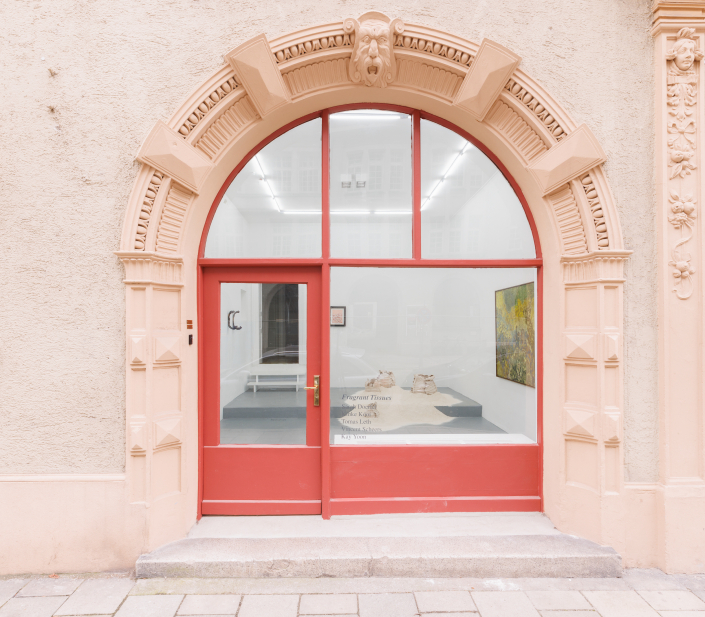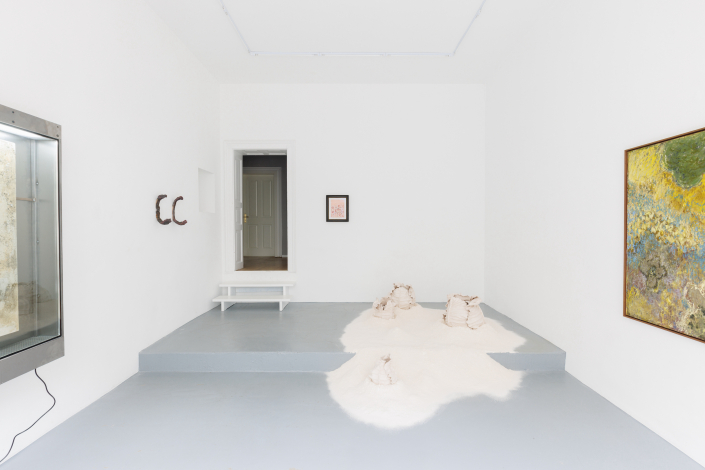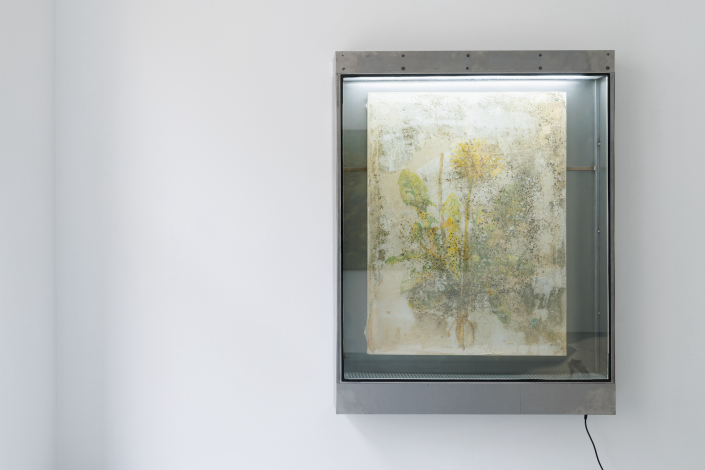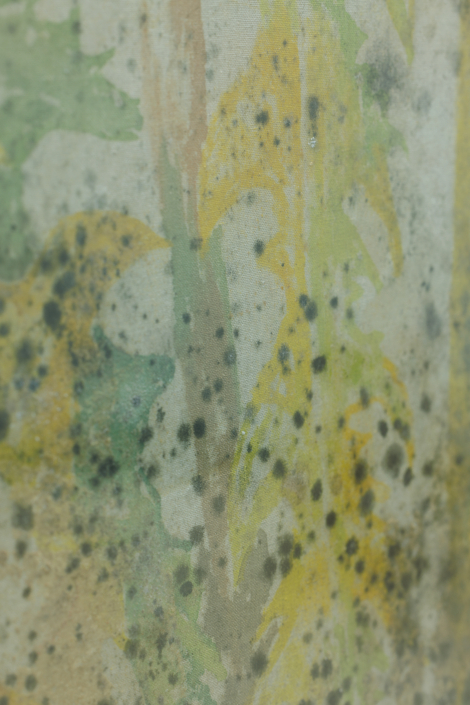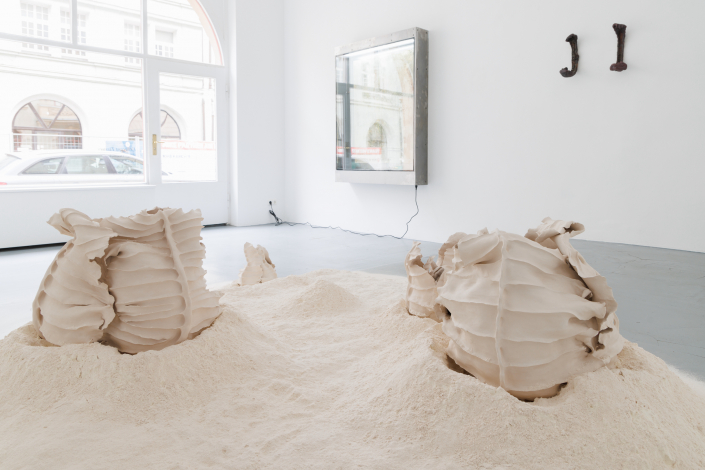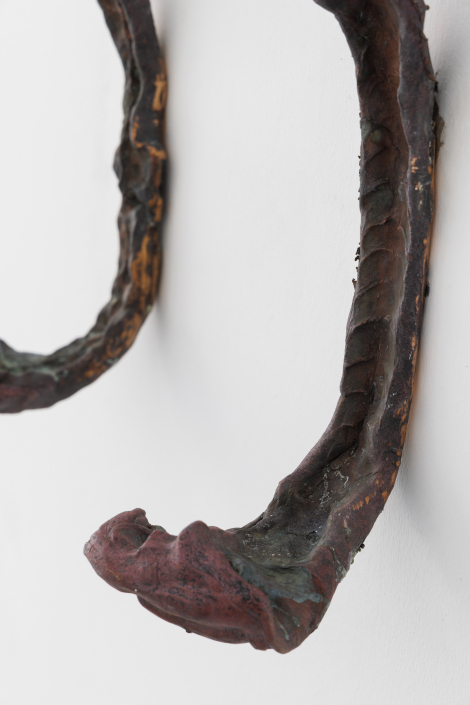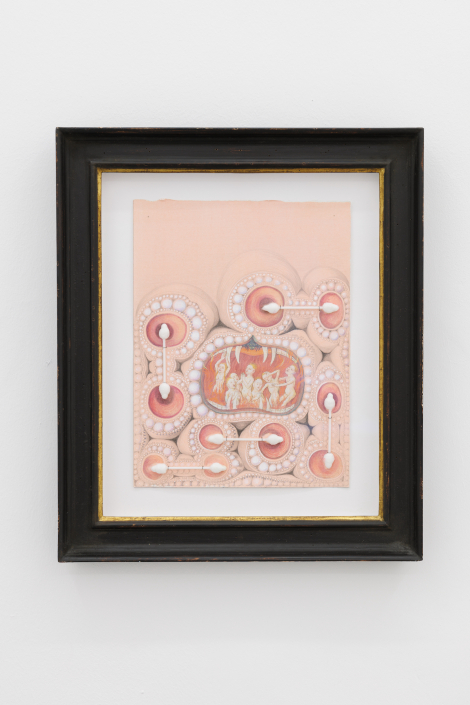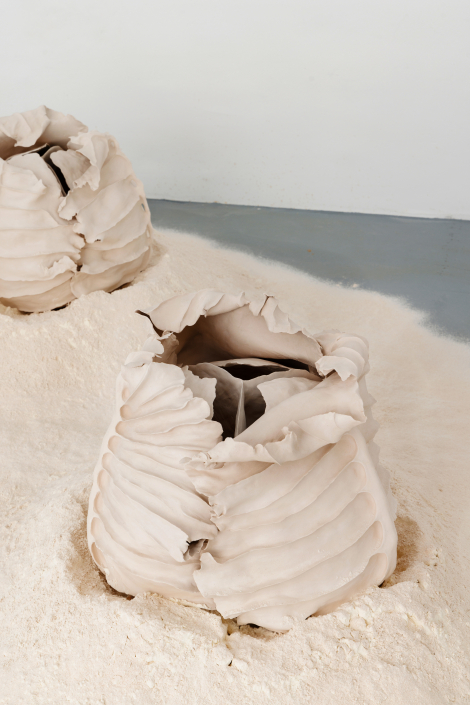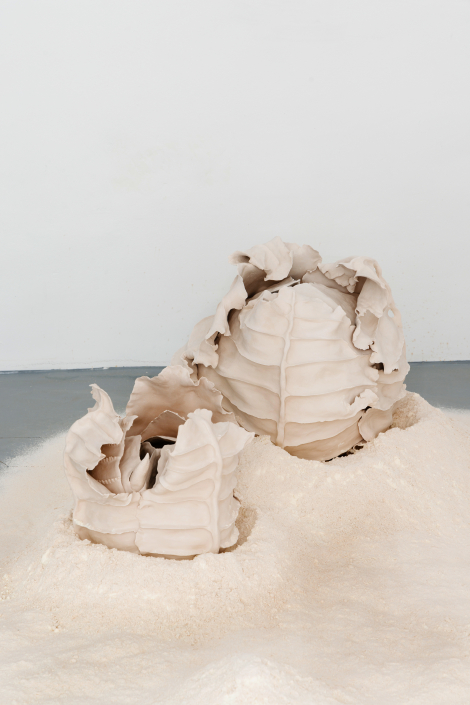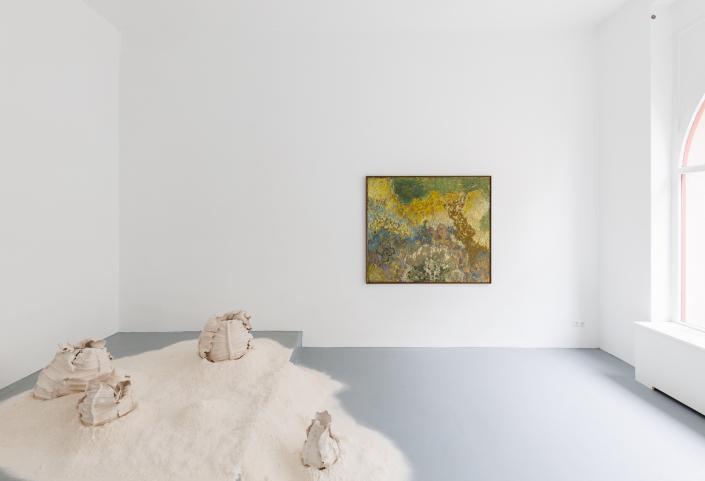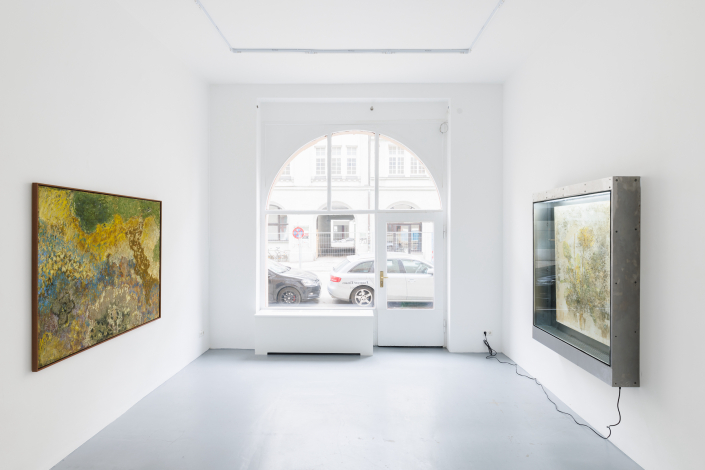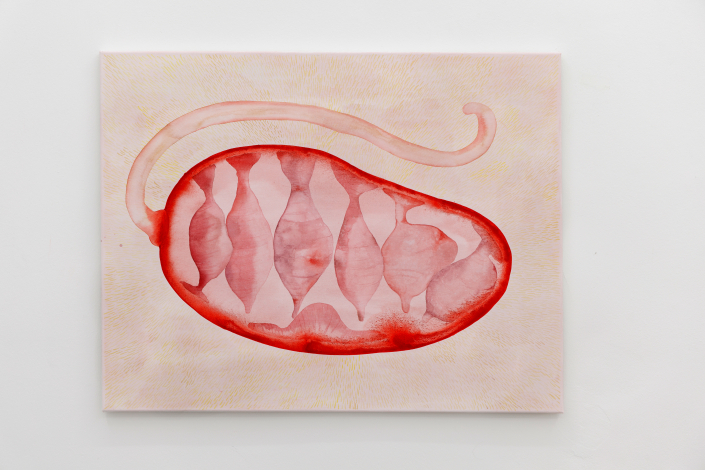EN
Fragrant Tissues
Sarah Doerfel
Kinke Kooi
Tomas Leth
Vincent Scheers
Kay Yoon
17 February– 07 April 2023
In Fragrant Tissues, five artists are testing the well-known theory of the survival of the fittest by presenting other models of evolution based on artistic speculation. The exhibition begins with a disturbing exercise of human imagination: Kinke Kooi believes in the power of mystery, which is unlocked in her paintings that often visualize human constraints through certain power structures and social norms. Her work Hygiene (2) shows seven young white women being burnt alive in the throat of a strange-looking creature. It’s unclear why the nudes are burning, however, the creature is held together by baby q-tips. Objects that are reminiscent of women’s “social obligation” to give birth. In this mysterious scenario lie hidden questions about equality, exclusivity, and images of women. The religious visual language of the painting makes us wonder about metaphysical questions that we often neglect in post-religious societies. Sarah Doerfel’s Pioneers ceramics fictionalize scenarios of symbiotic plant-animal species that first appear as beautiful cabbages, set in a timeframe oscillating between prehistoric past and future. Upon closer inspection, they expose rather complex living systems. We see varying states of life and death in four stages: Chronologically, one cabbage has not yet opened its leaves, another one is flowering, the next cabbage is at its highest level of growth and the last one is already starting to wilt. These savoy-like cabbages remind of carnivorous plants and show a fictional hybrid species with elements such as a huge phallus protruding from one of their centers. The white clay makes the sculptures look fragile and the light and shadow create an eerie, immersive quality akin to a Pittura Metafisica painting. With these more-than-plant entities, the gallery itself becomes an installation of metaphysical art. A dream-like space filled with unexpected juxtapositions of objects that seem like artifacts from an unknown past or even an uncanny future. Survival through symbiosis is also a matter of unlearning or synergizing with other habitats or even species. Kay Yoon questions how to define the functionality of body and space. Yoon’s aluminum casts materialize her research, which she calls abstract concepts into minimalistic visual forms. Her work Defleshed consists of two pieces. Like in photography theory where any photographic image only indicates all the absent images in the world, the aluminum casts that clearly show stretched- and gripped hand marks emphasize the absence of the artist’s body. The bone-like works allude to the missing flesh as if the human body is evidence of the social structures it tries to overcome. By listening to our body knowledge, which is as timeless as the patina of Defleshed suggests, we can constitute new ways of evolution beyond human cognition. Steel, glass, hacked egg incubator, watercolor on nettle cloth, agar-agar, various fungi, and bacteria are a rather unusual compilation of materials for a piece of art. Vincent Scheers’ Incubator Studies begin with an innocent watercolor painting of a dandelion flower – a plant both loved for its many versatilities and hated for its invasiveness. The actual work, however, is the process of decomposing the beautiful flowers with a bunch of microscopic entities that live on a layer of agar agar that the artist applied to the painted canvas. The bacteria and fungi procreate until even the last blink of green and yellow dissolves into black, white and greyish spots. In these works, Scheers creates eco systems for bacteria and fungi which we both love and hate like dandelions. What can we learn from observing them? Perhaps, by the end of human existence, planet earth will look like the dead battlefield that stands at the end of Scheer’s decompositions so another era may begin. Tomas Leth’s painting Dadelfind, by contrast, seems to live in a world where bacteria and fungi are no longer part of the human condition. Many layers of oil pastels in earthy hues reflect on idyllic biospheres. In Leth’s solo show Ekstatisk Pollen, running at Paulina Caspari (Augustenstraße 33a) until March 10, we enter a garden of Eden that is no longer dominated by the Anthropocene, but rather the aesthetics of the untouched or even the post-human. In this show, Dadelfind is a reminder of a future scenario in which all the efforts to save the human species through new modes of evolution have failed. What remains is the beauty of an intact nature transported by a contemporary interpretation of impressionist painting. Maybe this is a time when planet earth is rather populated by the entities prominently featured in Scheer’s and Doerfel’s works. Sarah Doerfel, Tomas Leth, and Vincent Scheers share work about biospheres, inhabited by more-than-human entities, which make clear that we need to inhabit this world along with other species instead of continuing to colonize the planet by conquering every non-human being. Overall, the show underlines the significance of symbiosis following the most prominent theory of American evolutionary biologist Lynn Margulis. But both, Kinke Kooi’s and Kay Yoon’s narratives digress from this by offering scenarios existing within the human mind rather than presenting environmental realities. Whereas Kooi’s work comments on the social condemnation of the female body’s use or non-use for human reproduction, Yoon’s work not only functions as a memento mori of human life’s inevitable end, but also of the bones it will leave behind as remains in the speculative world envisioned by Doerfel, Leth, and Scheers. All artists, however, remind us that we should listen to our bodies and environments instead of only counting on rational and scientific knowledge.
Text by Teresa Retzer
